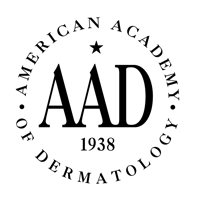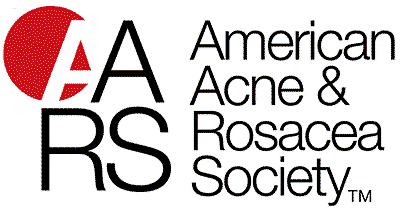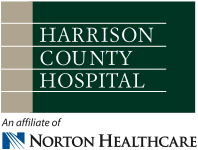Cosmetic Dermatology Treatments
The Dermatology and Skin Cancer Center of Southern Indiana
Dr. Landis skillfully combines her medical dermatology skills with a deep understanding of cosmetic dermatology to meet the individual needs of each patient. Her personalized approach ensures that treatments not only enhance natural beauty but also promote healthy skin.
Featured Treatment – Glycolic Acid Chemical Peel
What is a glycolic acid peel?
Glycolic acid peels are a type of superficial peel. Superficial peels cause the top layers of damaged skin to peel away over 7-10 days. Unlike medium or deep chemical peels, they will not affect the underlying layers of tissue. Glycolic acid comes in different concentrations ranging between 20%-70%.
What conditions does a glycolic acid peel treat?
Because minor skin blemishes are located in the top layer of skin, a glycolic peel can give you much smoother skin with a more even tone.
Glycolic acid peels are best for the following conditions:
- Melasma
- Acne
- Mild photoaging
- Superficial hyperpigmentation
- Fine wrinkles
- Enlarged pores
How many treatments will I need?
For best results, a series of glycolic acid peels is recommended. However, a noticeable difference is seen even after one treatment.
What should I expect during a glycolic acid peel?
On the day of your peel, you will wash your face with a gentle cleanser. Then, an acetone solution will be used to remove extra lipids (oils) on the top layer of your skin. The peel will then be applied to the full face. After 2-5 minutes, your physician will neutralize the peel with water. You may notice a slight burning or tingling sensation during this process. The full appointment will take less than 30 minutes.
What are the potential side effects of a glycolic acid peel?
Glycolic acid peels are non-invasive. Since they do not affect the underlying layers of tissue, serious complications are rare. You may experience some minor side effects, including:
- A mild stinging sensation during the treatment
- Flaking skin or dryness for 7-10 days following the peel
- Temporary redness, this may last several weeks.
- Crusting or scabbing
- A change in skin color
What should I expect after a glycolic acid peel?
You should expect your skin to have mild peeling and redness for 7-10 days following the peel. Mild redness may last 2-4 weeks. Specific aftercare instructions and products will be provided.
How many peels will I need?
Because glycolic peels are superficial, and thus safer than other types of chemical peels, improvement is gradual. While a single peel will freshen the skin, leaving a healthy glow, most patients should plan on a series of 5-6 peels to achieve their long-term goals. The treatments can be performed at 3 to 4-week intervals, gradually using higher strengths as the skin builds tolerance. Results are generally long lasting, although some patients may find an occasional peel every 3 to 6 months helps to maintain beneficial effects. Unfortunately, glycolic peels are not covered by insurance.
What are the risks?
Most people respond to a glycolic peel with only mild redness lasting several days. Adverse reactions such as peeling, scabbing, infection, recurrence of cold sores, and sensitivity to wind and sun are uncommon but possible. Rarely, areas of persistent darkening or lightening of the skin may occur, but this risk can be minimized by careful sun protection after the peel. We do not perform glycolic peels on patients who have used the acne medicine Accutane during the prior 6 months, or have an active infection in the treatment area.
Pre-Treatment Instructions
- Discontinue using self-tanners, masks, scrubs or exfoliating agents for at least 2 days prior to the peel.
- Discontinue alpha-hydroxy acid (glycolic cream), retinol, Retin A, Arazlo, tretinoin or Differin products 2 days before peel.
- Do not wax facial hair for 2 days before peel.
- Inform your provider if you have cold sores (or fever blisters) anywhere on the face prior to your appointment, or if you are prone to them.
- Avoid sun exposure and tanning for at least a week prior to your peel.
Post-Treatment Instructions
- Avoid exercise and sweating (e.g. sauna) for a few hours after the procedure.
- You may use makeup immediately, but apply very gently without traumatizing the skin. Do not use scrubs or rub your face with a wash cloth when removing makeup.
- Use sunscreen of SPF 30 or greater (preferably containing titanium dioxide or zinc oxide) during the week following the peel. Strictly avoid tanning, and sun exposure which can cause darkening in the treated skin.
- Alpha-hydroxy acid, retinol, Retin A, tretinoin, Arazlo, or Differin may be resumed 2 days after your peel, or when all redness has resolved. During this time, use a gentle moisturizer 1- 2 times a day.
- Do not wax or use bleach or depilatory creams for at least a week after the peel.
Call The Dermatology and Skin Cancer Center today at 812-734-3881 to schedule your glycolic acid peel today!
Concerned about your overall skin health?
Contact us today at (812) 734-3881. Dr. Landis will setup a plan tailored just for you! AppointmentsPatient Education
Visit our Patient Education page for more information about Medical Dermatologic Conditions
My wife and I have been patients of Dr. Landis for many years and would not think of seeing any other dermatologist. She is very observant, kind and caring. We have followed her from Jeffersonville to Corydon along with many of our friends.














